Hidden high up in the jungle-covered hills of northern Thailand is a ramshackle town of bamboo shacks, riverside bars, and hippie cafes: Pai. It’s a place where the rhythms of life are slow.
People purr around on their motorbikes, sip matcha shakes under the shade of teak trees, bathe in hot springs, and really crank up the R&R.
The main street is the walking street that runs parallel to the slow-motion Pai River. In the evening, it converts into a bustling strip of al fresco cooks and jewellery sellers.
Elsewhere, fire pits crackle in reggae bars filled with pantaloon-wearing hippies and their bongo drums, while mist gathers on the spiked mountains that roll around the ranges, marking the wild frontier between Thailand and Burma/Myanmar.
Are you planning a longer trip around south-east Asia, and in need of itinerary ideas for you can spend 3months in South East Asia?
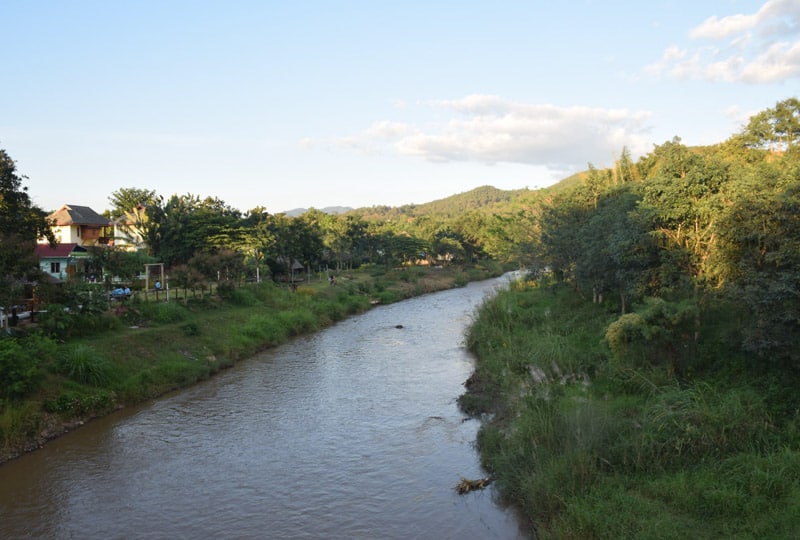
The peaceful river flows through the town.
Where exactly is Pai.
Pai is one of the very last towns in the Land of Smiles before the border with Myanmar. It’s hemmed in on all sides by huge karst mountains and dashes of an impenetrable forest, which is the terrain that characterises much of the larger Mae Hong Son province of which Pai is a part.
The nearest city is Chiang Mai, some 128 kilometres to the south. The provincial hub of Mae Hong Son town sits a whopping four hours’ drive around a winding road to the west – just a hint at how remote this area of Thailand really is.
What to do in Pai
After the buzz of Chiang Mai, Pai is the perfect place to unwind and relax. It’s tailor-made for folk who love to don the elephant-print pants and swing away days in the hammock. However, there are also a few things that can help set the pulse a-racing, not to mention activities for families and foodies alike…
Pam Bok Waterfall.
Located in a lonely mountain gorge to the south-west of the centre, the Pam Bok waterfall is an ideal option for cooling off during a day of cycling around the Pai valley.
Lock up your wheels at the small parking lot at the end of the waterfall canyon.
Then, clamber over the crooked rope and timber bridges, hop crevasses in the mud, and postbox through a narrow slot in the rock and viola: A shower-like stream crashes into a refreshing pool of mountain water.
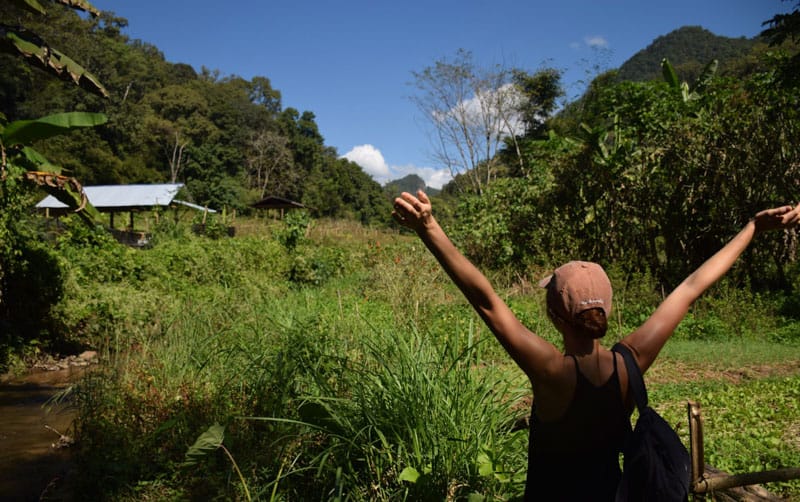
The whole area is full of green and lush nature.
Go trekking around Pai.
Perhaps the greatest natural treasure of Pai is the phalanx of peaks that tower over the little town. Crags of whittled limestone, they come clad in thick jungles and rainforests.
Over the years, hiking trails have been ferreted out in their midst, and there are now countless outfitters offering day-long and multi-day hikes through the mountains.
Some of the best offer tours through the bamboo forests and verdant farms up by Lahu Village. But there are also more challenging three-night adventures into the old-growth Soppong Jungle to meet traditional hill tribes.
Visit Pai Village Farm.
An encounter with a hairy goat and a hopping bunny might not seem like the sort of thing to expect up in the misty highlands of Thailand, but that’s precisely what’s on the menu over at Pai Village Farm.
You can easily walk there from the main street – it’s around 10 minutes on foot through fields filled with water buffalo. At the entrance, you’ll be able to buy fodder for the farm creatures, all before wandering through sheep and alpaca enclosures.
There’s also a great organic café at the end of the farm. Grab an iced coffee there in the company of free-roaming rabbits.
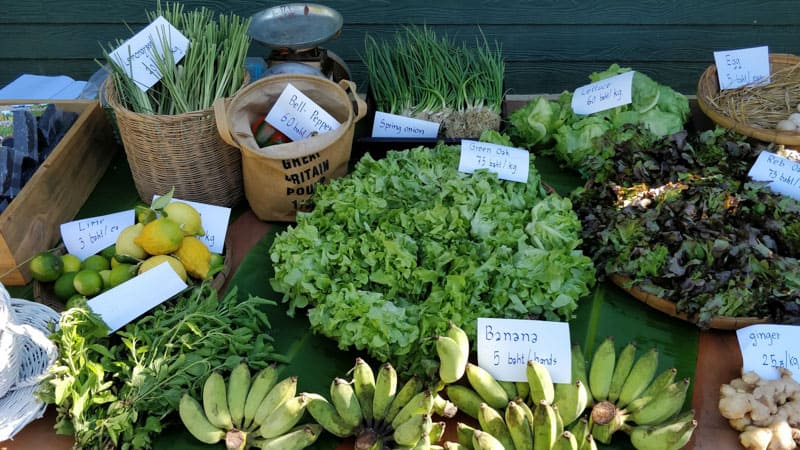
Pai is a organic food heaven.
Swim in the Pai hot springs.
Pai is actually surrounded by hot springs. Naturally warmed, mineral-rich waters gurgle from the grounds all over the nearby mountain ranges.
Easiest to reach and the most popular for travellers is surely Tha Pai Hot Spring.
Located in a clearing in the woods a little to the south, it spills over a series of small ledges, creating several bathing pools as it goes.
There’s a 300 THB entry fee, but that includes glimpses of the hottest pools (so hot they can boil an egg) and access to all sorts of bathing at different temperatures.
Explore Pai Canyon (perfect at sunset)
Pai Canyon is surely up there with the most dramatic features of the whole of the Pai Valley. Just a whisker off the main highway leading into the town, it unfolds in a patchwork of deep muddy cliffs and high lookouts.
Most people will come here for the sunset, which is particularly stunning as the light glows orangey-yellow across the highlands to the north.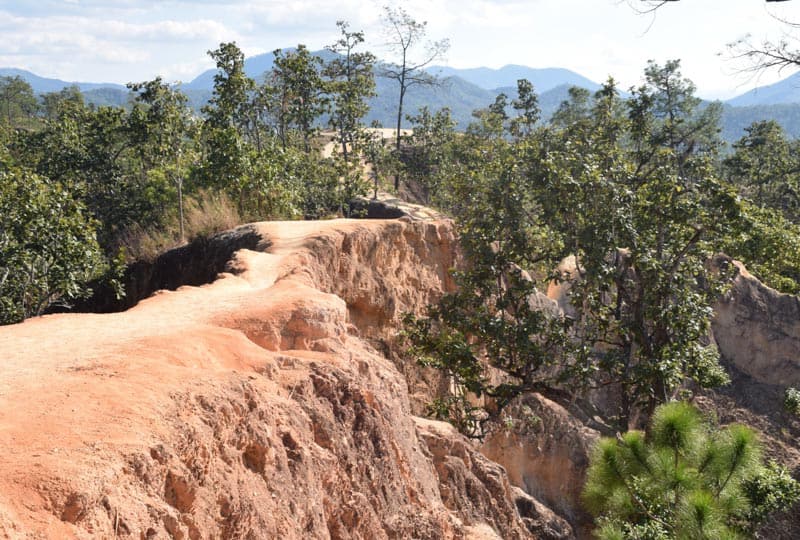
See the Pai Land Split.
Tucked into a rural little farm on the way to the Pam Bok Waterfall, the Pai Land Split is an unexpected glimpse at the metamorphic forces at work in the subterrane of northern
Thailand. Just a couple of years ago, this place was all flat fields filled with growing veg. Now, a great cleft in the earth opens between hulking ridges barely held together by pine trees and scrub.
The people who manage the land realised the tourism potential of the ever-growing gorge in their garden and now ask for donations from passersby.
They also have a lovely little fruit stall with flower juices and fresh bananas.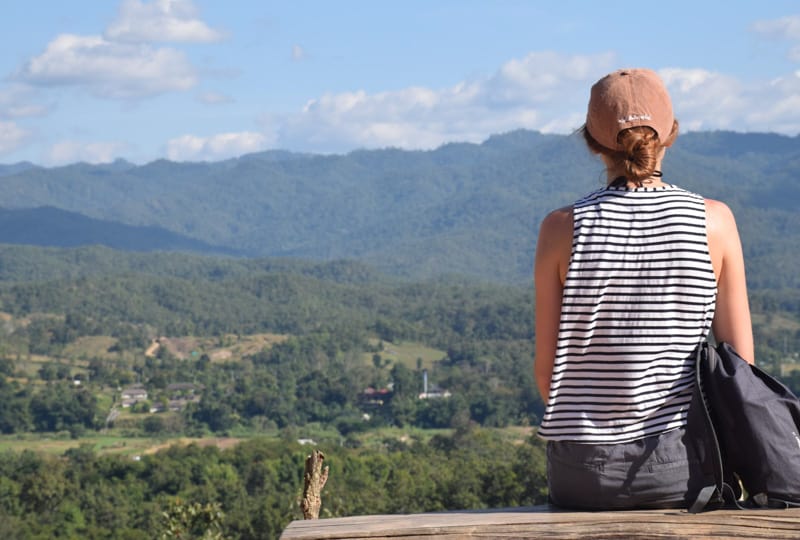
Chill in Fluid Pool.
One of the great things about Pai is how every traveller seems to meet and mingle so easily. The small size of the town and the good-vibe bamboo bars help with that.
But the real place to go hang with fellow backpackers is surely Fluid Pool. You’ll be greeted by a gym with overtures of Arnie c.1981 when you arrive.
But push past, and there’s a large garden shaded by fruit trees and filled with a large swimming area to enjoy, not to mention an on-site bar with a cold beer, good food, and endless reggae.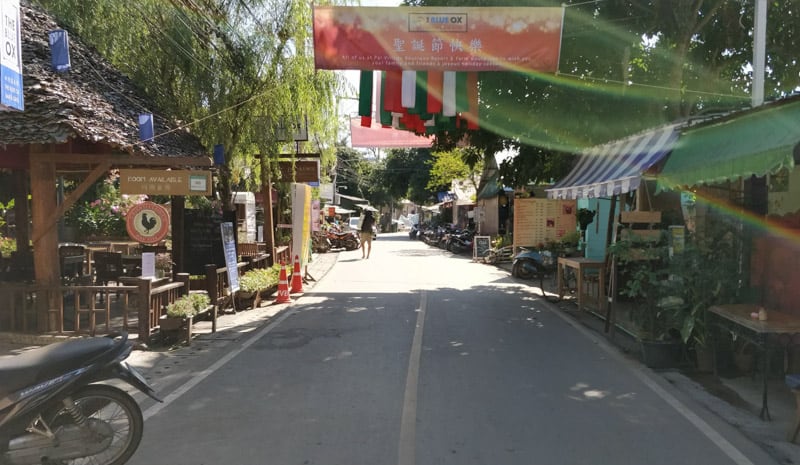
Where to stay in Pai
Pai’s been drawing travellers for decades. Ever since the first long-haired hippies flocked to these hills in the 60s and 70s, you’ve had lodgings aimed at Thailand’s infamous farang (tourist).
These days, there are endless options. From bamboo-built cottages on the edge of the Pai River to deluxe hotels with chic doubles and suites, you’re free to pick whatever the budget will allow.
Booking.com
Spicypai Backpackers ($)
One of the original breed of backpacker hostel in the north of Thailand, Spicypai has been hosting young groups of travellers for years. Shared dorms and simple rooms housed in bamboo-covered longhouses help to keep things traditional, and the prices low. But the atmosphere is perfect if you’re after long nights of stargazing, clinking cold beers with likeminded globetrotters, and hopping the nearby bars.
Pai My Guest ($$)
Sat on the quieter eastern banks of the Pai River, between chilled bars and cosy cafés is the forever welcoming Pai My Guest resort. Part luxury hotel, part local homestay, it combines two strands of accommodation in one. Yes, there’s a pool with a gushing fountain in the garden. But you also get to live in the middle of emerald rice paddies and watch stunning sunsets from the on-site deck area.
Pai Village Boutique ($$$)
The hotel-wing of the folk that own the aforementioned Pai Village Farm, this charming boutique lodging occupies a prime position just a few meters from the end of the Pai night market. A leafy garden bursting with ferns and fruit trees surrounds wood-built cabanas with lazy decks. Interiors are chic but simple. And guests can expect immersion in nature along with sumptuous breakfast buffets. What’s more, a free shuttle can take you to see the animals at the farm whenever you please.
How to get to Pai.
Let’s get one thing straight: Pai isn’t the easiest place to get to in Thailand.
Most travellers will opt to do the journey overland. That’s easy to organise, what with 12-person minibuses departing out of Chiang Mai’s Arcade Station. Don’t expect a comfy ride, though.
There’s a stomach-churning 700-plus turns on the route, unfolding over 80 miles of wiggling, winding hairpin bends through the peaks.
Sick bags are a good idea, and perhaps dodge that fresh coconut shake before boarding! Tickets typically cost in the region of 150-250 THB.
If you’re vulnerable to travel sickness or just have some cash to splash, there are also now regular short-haul flights between Bangkok, Chiang Mai and Pai.
That will cut travel times from several hours to just 25 minutes, and mean getting sweeping views above the rainforests and karst ranges of both Myanmar and northern Thailand.
This ultimate guide to Pai could still have plenty of additions. If you’ve been to this fun-filled mountain town in Mae Hong Son and can think of anything, we’d love to hear it in the comments below.
Like It? Share It! Pin It!
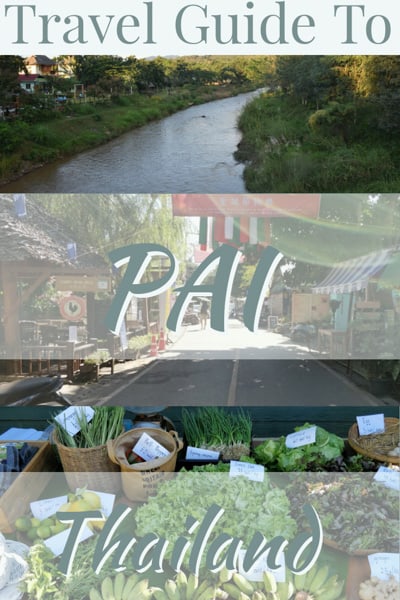
Hidden high up in the jungle-covered hills of northern Thailand is a ramshackle town of bamboo shacks, riverside bars, and hippie cafes: Pai.
